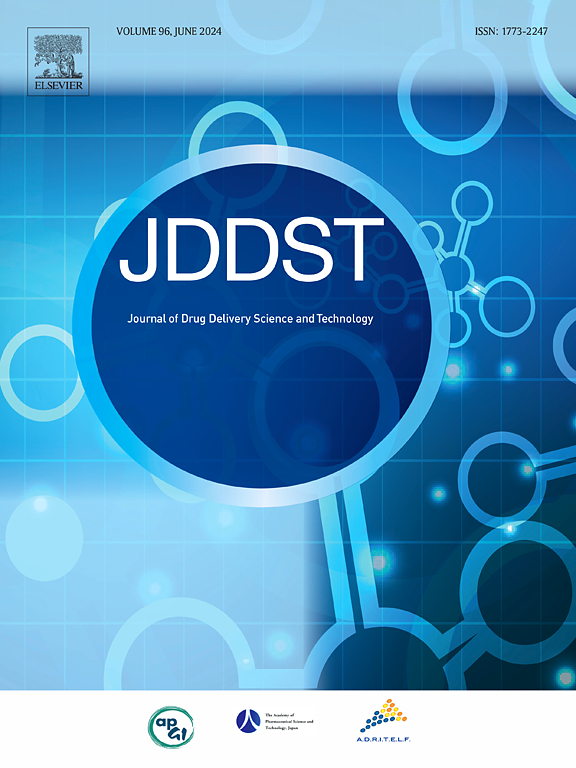Eco-friendly synthesis and multifunctional evaluation of silver nanoparticles using Boleophthalmus dussumieri mucus: Antibacterial, anticancer, and predictive modeling applications
IF 4.5
3区 医学
Q1 PHARMACOLOGY & PHARMACY
Journal of Drug Delivery Science and Technology
Pub Date : 2025-03-27
DOI:10.1016/j.jddst.2025.106843
引用次数: 0
Abstract
The synthesis of eco-friendly silver nanoparticles has attracted significant attention from researchers, primarily due to their wide-ranging applications in contemporary medicine, having antioxidant, antimicrobial, and anticancer properties. In this study, green-synthesized AgNPs (MM-Ag NPs) using Boleophthalmus dussumieri mucus were prepared and characterized for their antibacterial, antibiofilm, antihemolytic, and anticancer properties. Characterization techniques UV–vis, SEM, TEM, and AFM confirmed that the nanoparticles were uniformly spherical, ranging from 10 to 30 nm. The nanoparticles showed a UV–visible absorption peak at 428 nm, indicating a successful reduction of AgNO3. FTIR analysis revealed bioactive molecules on their surfaces, while X-ray diffraction indicated a face-centered cubic structure, with a zeta potential of −16 ± 0.65 mV. MM-Ag NPs exhibited strong antibacterial activity against the confirmed bacterial strains, including Escherichia coli, Pseudomonas aeruginosa, and Staphylococcus aureus, with a notable 22 mm inhibition zone against E. coli. In cytotoxicity assays on MCF-7 cancer cells, an IC50 value of 48.73 % was recorded at 256 ppm, highlighting their anticancer potential. Biocompatibility tests demonstrated safety through membrane stabilization assays using red blood cells. Machine learning techniques were also applied to predict values related to Citrobacter freundii and Morganella morganii for MM-Ag NPs. The best model for predicting their concentrations was identified, showcasing the effectiveness of ML in enhancing research efficiency and reducing trial-and-error approaches. In conclusion, this study underscores the significant biological potential of AgNPs derived from B. dussumieri mucus as promising antimicrobial agents against bacterial infections; potential anticancer agents in cancer therapy, and eco-friendly candidates for drug delivery systems.

求助全文
约1分钟内获得全文
求助全文
来源期刊
CiteScore
8.00
自引率
8.00%
发文量
879
审稿时长
94 days
期刊介绍:
The Journal of Drug Delivery Science and Technology is an international journal devoted to drug delivery and pharmaceutical technology. The journal covers all innovative aspects of all pharmaceutical dosage forms and the most advanced research on controlled release, bioavailability and drug absorption, nanomedicines, gene delivery, tissue engineering, etc. Hot topics, related to manufacturing processes and quality control, are also welcomed.

 求助内容:
求助内容: 应助结果提醒方式:
应助结果提醒方式:


